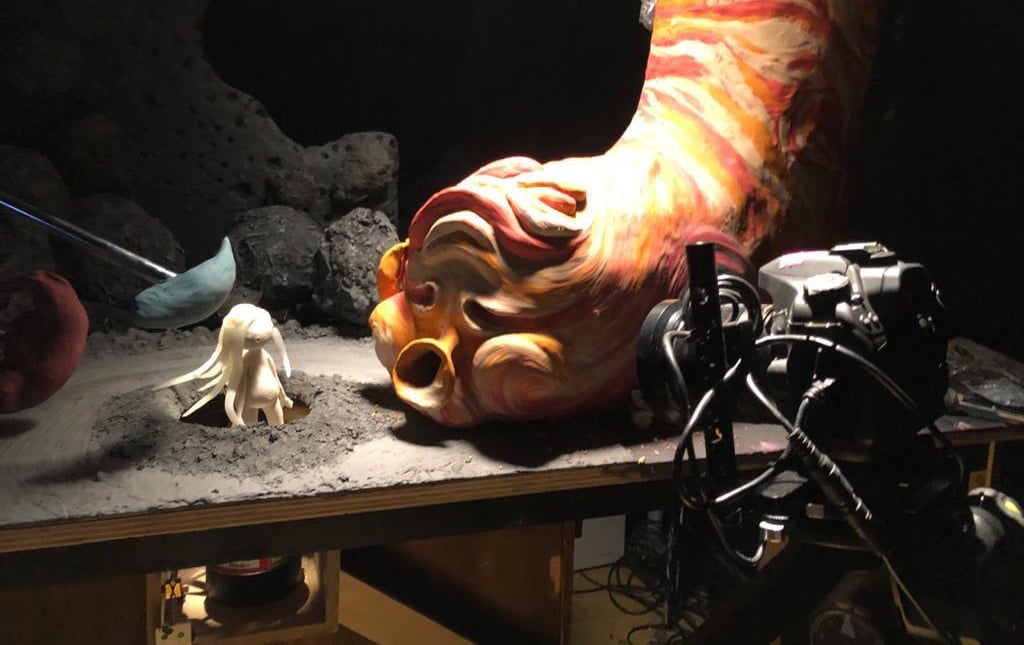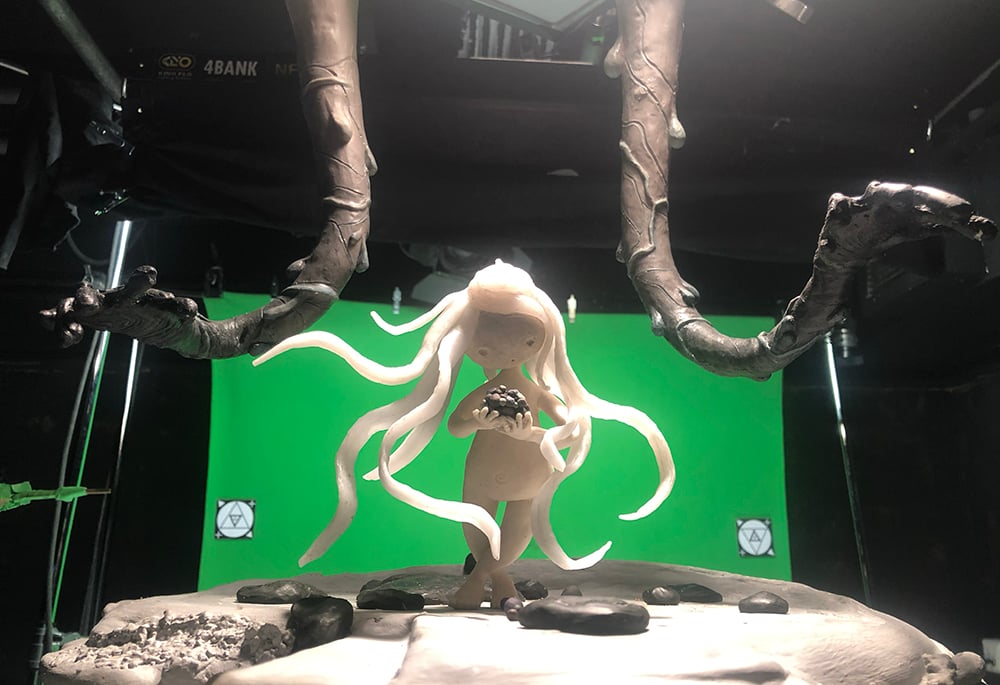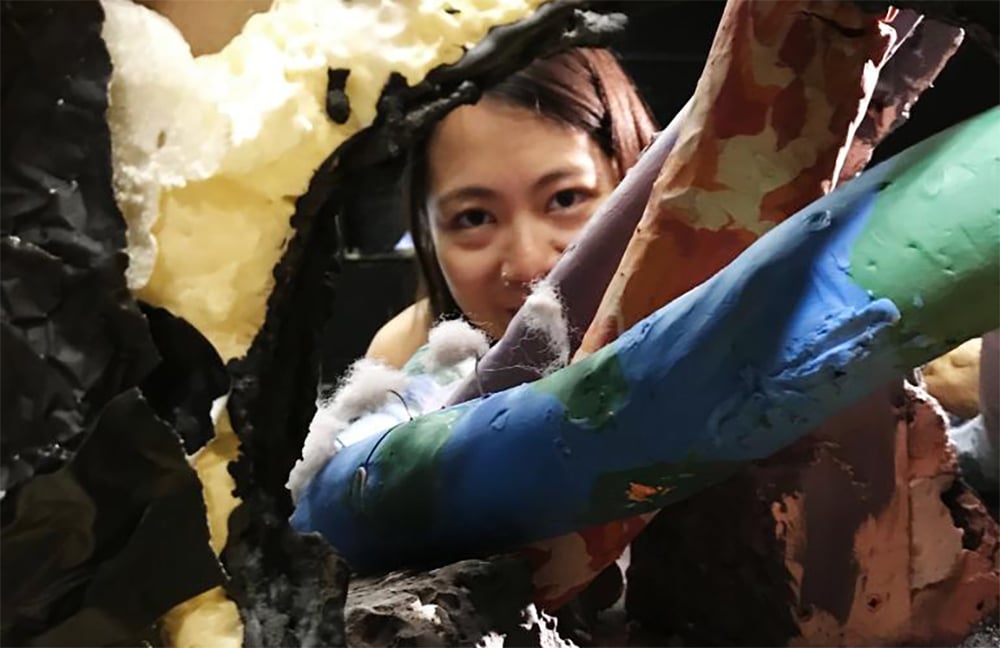In the film world there are few distinctions much greater than the elusive Vimeo Staff Picks laurel. And for aspiring filmmakers of any level or niche, browsing through the best short films on the internet, hand picked by Vimeo staff is a great way to find inspiration as well as keep tabs on how some of the most talented creators are working in the medium.
As our friends at Vimeo have recently released their 2022 Best of Staff Picks, we got the opportunity to chat with Renee Zhan, one of this year’s winners, about her short film ‘O Black Hole!’ which was included on Vimeo’s Best Video of the Year list.
Zhan, a UK-based director and animator, shares some insights into her artistic process, the challenges and opportunities of combining different 2D and 3D animation styles, and how music and sound effects can be key to bringing everything together.
Soundstripe: First of all thanks for taking the time to talk about your film 'O Black Hole!' and congratulations on its Vimeo Staff Picks Best of the Year win! What was your initial inspiration for the project?
O Black Hole! (Interactive) from Renee Zhan on Vimeo.
Renee Zhan: So this project was my graduate film at the National Film and Television School, which is in Beaconsfield, England, which is this small town west of London, which itself is kind of like a black hole. So, at the time I just kind of started making this drawing of a woman with a dark smear where her face should be, and this happened to be the same time when we were starting our grad films. And I was kind of interested in interrogating myself to find out why this image was so present at the time for me. I really wanted to know what her story was and why this may be happening and eventually landed on this idea that maybe she was turning into a black hole.
I was also kind of interested in this description, that people say about people sometimes, that they’re like a black hole, and how that could mean so many different things to different people. I felt that was an interesting place to start a film because there were just so many possibilities. It also was going to be my first stop motion project, so the visual side was very exciting to me as well — like the inside of black hole would be something that I didn’t really know what it might look like, so it would be plenty of room to kind of make stuff up and imagine what it all could be. Which is where the idea of the project started.
Soundstripe: The film combines many different styles of art and animation, what was your approach to finding the right way to narratively piece everything together?

Renee Zhan: Hmm, so I definitely came from a 2D background with painting and drawing and had been incorporating that into animation already. And, very recently, like right before this project, I had started another film called Soft Animals where I was using different mixed media techniques and just trying them all out in a single short film — and I kind of liked how messy it was.
So I was definitely excited to try different mediums for this project and it seemed like a good time to try out the stop animation too. And so those were the two sides of the film, the 2D and the 3D sides were divided into the first half being 2D which shows everything outside of the black hole, and then the second half of the film shows what’s happening inside of the black hole in 3D, where the woman is sucked in and she takes in the universe and everything inside her in order to keep them safe and with her forever.
And so everything that’s inside the black hole is kind of stuck and tortured because they’ve been stuck and forced to live there for a thousand years. So they’re permanent, whereas everything outside the black hole is kind of ephemeral and transient. So it made sense that the outside would be made out of more transient mediums of charcoal and watercolor, whereas everything inside would be more solid and forever.
Soundstripe: Dubbed an "animated space opera" in the description, how did the musical elements of the project come together and eventually combine with your animation process?
Renee Zhan: I always wanted to make a musical. My previous film Reneepoptosis was constructed out of rhyming poetry — like rhyming couplets. So it kind of felt similar to using that structure to build a film around. I thought the next step was maybe to be more musical. And the best thing about the school I go to was also that I get to work with so many amazing collaborators. Harry Brokensha is a composing student whom I approached with the idea of making this musical and he was really excited and is an absolute mad genius. And so we just kind of took it from there.
I also knew that I wanted to tell a lot of story within a short amount of time, so I thought that one way would be through lyrics rather than narration. So it was really fun to go back and forth on the process of writing as I’d write some lyrics, he’d tell me what does or doesn’t fit into the music, and so I’d write it again. And then he’d write some more lyrics and it was really just an enjoyable process — I’d love to make more musicals to be honest.
Also though, because the singularity travels through the different levels of the black hole and in each one she needs to meet the planets, the seasons and the humans, and we were going to have distinct looks we had to also figure out different musical styles for each .
So the planets are these big operatic voices, and the seasons are these seductive cabaret women, and the humans are these tape recorders that are stuck and rewound on themselves again and again. And then the black hole woman was played by an experimental opera singer named Loré Lixenberg, and the singularity was played by Emmy the Great, so everyone had their own musical identity and it was our goal to piece it all together.
Soundstripe: So many of the unique and beautiful characters in the film are brought to life not only with creative animation, but also with their own voices and sounds. How did you work to sonically bring the different elements and effects to life?

Renee Zhan: Yeah, so that was a big part of the process. I worked with an amazing sound designer called Ed Trousseau and he was involved from the very beginning. And yeah, we were trying to create both this sonic and visual world inside the black hole. We had a lot of opportunity to mix in Dolby Atmos, so that was kind of what Ed was doing a lot of this time — trying to create this big, cavernous sound space, which is hard to do when you’re physically building on such small stop motion sets.
So sound played a big part in making things feel big and epic. And then as the story gets more into the black hole, everything gets less stuck and starts to move, so he wanted the sounds to sound like different places too, so we needed to explore different parts of the room and this big space. And sometimes he would even spin it and I would start getting dizzy listening to this sound. I really learned a lot about how powerful sound can be and it was a really fun part of the process.
Soundstripe: If you were to give any advice to aspiring animators or film or video creators hoping to bring their own creative projects to life, what insights would you share to help them develop their own storytelling voice?

Renee Zhan: Well, it’s hard, but I think the best advice I’ve been given from filmmakers whom I admire is to figure out what you’re obsessed with and what it is that you can’t stop thinking about. That’s kind of the best advice because when it comes to actually making a film, especially in animation, it can be a long and difficult process. You’re going to be working within the film for a long time, which can be nice as you can learn something about yourself in the process. But it can really feel like personal growth, and even growing up, just trying to learn as you go through each film that you make.
I also think it’s important to listen to your instincts and go with your gut. For example, even while making ‘O Black Hole!’ in film school we had so much pushback and so many people had questions about the film — even saying things like that doesn't make any sense. And, I mean it’s true, it doesn’t make much sense — but in its own way it has been really validating how many people have responded to it and have their own interpretations to it emotionally. So yeah, I’d say stick to your instincts and take broad feedback, but also stick to what your gut tells you. There’s all kinds of ways to go out and make something and that’s okay.
For more insights into Renee Zhan and her work, be sure to follow her on Blinkink. And if you want some more inspiration, check out the watch the rest this year's Vimeo Staff Pick winners.

